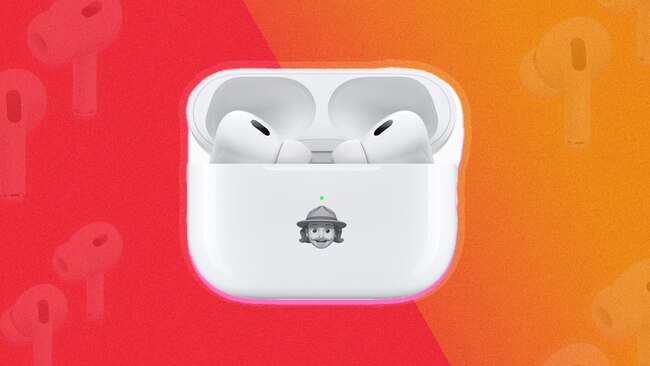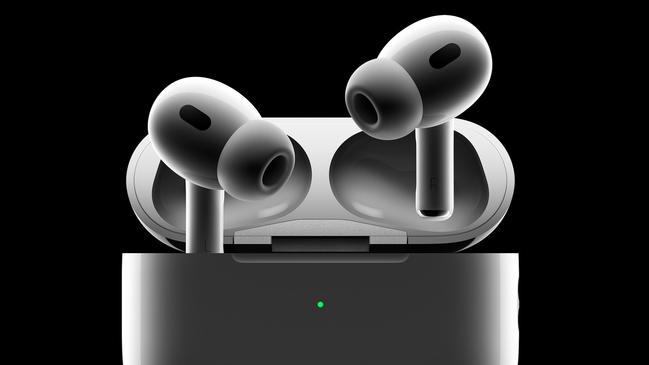Apple's new Airpods are for the music snobs
The brand's new earphones keep the iconic look, but are they worth $399?

The brands new earphones keep the iconic look, but are they worth $399?
The AirPods Pro have reigned supreme as Apple’s premium true wireless offering since 2019.
The brand new, 2nd Generation AirPods Pro, in stores Friday, September 23, keep the iconic look, but revamp the innards to make for a better listening experience.
I’ve been using them for more than a week, and here’s what’s new, what’s good, what’s not so good, and my take on whether they’re worth the $399 price tag.
What’s new?
The biggest new feature is the H2 chip. It’s not something you can see (aside from a little black stripe on the top of each bud, they look identical to the previous model), but it’s that little chip that drives all the meaningful improvements. Those improvements include the new Adaptive Transparency mode, doubling the noise cancelling, personalised Spatial Audio, an extra 90-minutes of battery life built into each bud, and, thanks to the new low-distortion audio driver, improved audio quality. This means the bass is much more commanding without bringing down the high notes, so music sounds more grounded and cleaner.
Beyond that, the case now has MagSafe, a little lanyard hook so you can stop losing it in your bag, and a speaker (so you can ping it and actually find it).

Audio quality
These AirPods Pro sound fantastic, The previous generation was pretty good, but the bass is just so much clearer on this generation. The details are crisp and clear and you can make out each layer of songs.
I’ve written before about how Spatial Audio, when deployed well, can allow you to go deeper inside music. Well, the 2nd Generation AirPods Pro seem to handle Spatial much better than the previous generation. Car Radio by Twenty One Pilots is a song I generally have no real feelings about. It’s fine. On these buds with Spatial, however, it somehow became a bigger experience, one that I can only describe as being in an emotional planetarium with the way the synths surrounded me. The new personalised Spatial Audio takes the already excellent Spatial Audio experience to new heights.
On my usual headphone testing song, Chasing Twisters by Delta Rae, it’s easy to see how the new drivers make the bass much clearer and deeper. You really get the resonance from the floor tom in the verses, cymbals still shine bright and clear without being weighed down (though, on these headphones I can’t quite tell if they’re crash or splash cymbals, so there is some detail missing). Her voice also sounds clear, with most of the proper emotion, but the vocal growl before the second verse is missing, and that’s usually what separates the very good headphones from the excellent.
Better Now by Odesza also sounds perfectly balanced. The bass is grounded and crunchy, while the higher synths soar.
I’ve spent more than a week with these, and I would say that they’re one of, if not the best-sounding true wireless headphones I’ve ever heard.
Adaptive Transparency Mode
With these, Apple clearly wants to get you in the habit of wearing your AirPods Pro constantly, and the addition of Adaptive Transparency makes that a viable possibility.
To begin with, Transparency Mode been improved so much that it doesn’t even sound like you’re wearing headphones anymore. Most other headphones on Transparency Mode just turn on all the microphones and wish you luck, amplifying every sound, rather than just the ones you’d normally hear. Suddenly you can hear the way your hand sounds on a desk, or surround sound of someone chewing that you wouldn’t have been able to hear before. The new Transparency Mode just sounds like the world normally would if you didn’t have headphones in, which is incredible.
On top of that, Adaptive Transparency Mode listens out for loud sounds, like a motorbike going past, or a jackhammer, and uses a touch of Noise Cancelling to preserve both your hearing and your sanity. It works really well. Not perfectly, but better than my naked ears can handle, and that’s enough for me.

What’s wrong with it?
While the noise cancelling is greatly improved over the previous generation, it’s not perfect. On a flight I could still hear deep male voices, a baby crying, and lots of people coughing, albeit more faintly that if noise cancelling wasn’t on. However, I couldn’t hear women’s voices, the plane engine noise you get in the cabin, or the sound of the drinks cart, presumably because of the frequencies targeted for active noise cancelling.
Apple made one weird choice with these AirPods: the microphone. On many headphones that I test, the microphone on the device is always set up to cancel noise other than your voice when you’re on a call. You can have the little speakers on transparency mode so you can regulate the volume of your voice, but the microphone is on noise cancelling. The AirPods Pro design team did not do this. If you have the buds on noise cancelling, the noise will be cancelled for the microphone too. If you have the headphones on transparency so you can hear the world around you, the microphone will do that too. So, if you’re planning on taking calls on your AirPods Pro in public, that’s something to keep in mind.
Also, there are just the problems inherent to the true wireless category, which is that their death date is sooner than many other products and they’re not recyclable or repairable. They’re just not an environmentally friendly product, no matter how much the company that makes them talks about using renewable energy in the factories that make them. This isn’t unique to AirPods Pro, and is true across the board with true wireless headphones, but it is something to keep in mind.
Are the AirPods Pro (2nd Generation) good?
Yes, extremely. While they lack the support for lossless audio that the Samsung Galaxy Buds2 Pro feature, I actually think these sound better. The Galaxy Buds2 Pros didn’t quite pull off mid and high tones, and everything sounded a bit too grounded. Directly comparing them on Full Heart Fancy by Lucky Chops, on the Galaxy Buds everything was firmly rooted down the lower end of the scale. The bass is impressive for a bud so small, but the song doesn’t soar like it normally does, it’s tethered and there’s a soft fuzz. Meanwhile, on the AirPods Pro, the bass was still deep and there, but it wasn’t the focus of the song anymore. The sousaphone was allowed to fly, and it all felt more natural; closer to what I imagine the band was going for.
The touch controls also make more sense. Normally I absolutely hate touch controls on headphones, particularly true wireless buds, because they’re too easy to press accidentally and not easy enough to press deliberately. However, they’re pretty good on AirPods Pro. They make as much sense as that little remote on the wired Apple headphones used to a decade ago. The new feature of being able to stroke the stem to change the volume works well enough. I still prefer controlling things from my watch, but it’s nice to have another option.
Who is it for?
If you’re just using them for calls, podcasts and Zoom meetings, then the AirPods Pro is overkill. You could just use first-generation AirPods, or any other headphones with a decent microphone, really.
The AirPods Pro are primarily for music lovers and movie buffs. If you’re an Apple user who listens to things where bass and audio clarity matter, then true wireless buds don’t get easier or much better for under $400.
They’re also for people with sensory issues or who require hearing accommodations. AirPods Pro are really best in class for accessibility when it comes to mainstream headphones. You can customise the frequencies to suit any accommodations you might need, you can use your phone as a microphone and listen through your AirPods in a crowded restaurant or lecture hall, and transparency mode coupled with noise cancelling means you can use them to tune in and out of the world. Neurodivergent people who are ok with having things in their ears, but aren’t ok with sudden loud sounds would really benefit from adaptive transparency mode, and we all know how noise cancelling is a lifesaver for those with sensory issues.
If you fall into either of those last few categories and are deadset on true wireless headphones, then I wholeheartedly recommend the second-generation AirPods Pro. It really doesn’t get much better than these in this form factor.


